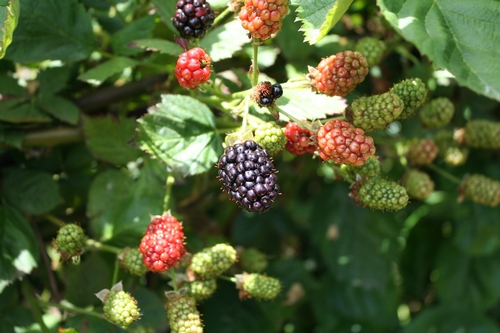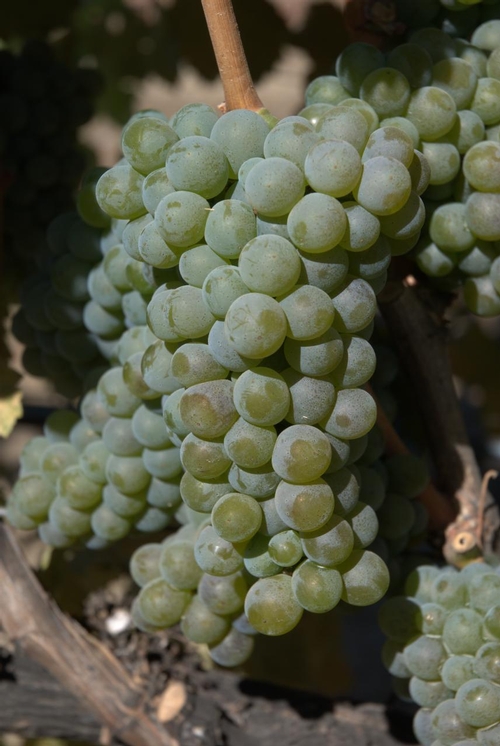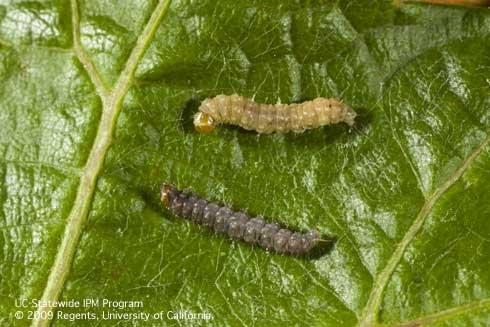The recent implementation of an eradication program and proposed quarantine of grapes of a small area in south Santa Cruz County due to multiple finds of European grapevine moth, Lobesia botrana, puts us in the position of having to discuss in detail the possibility that this pest could occur in blackberry.
While blackberries are described in the literature as having been a host of European grapevine moth and thus will fall within compliance actions, I have reason to doubt that European grapevine moth will be found in our cultivated blackberry varieties here on the Central Coast because of the following:
1- The clustered inflorescences of grapes are quite distinct from those of blackberries, yet have been described as a major part of the attraction of grapes to European grapevine moth. Blackberries occur in loosely formed inflorescences of less than 10 fruit, and are not in compare to the numerous, closely grouped fruit of wine and table grapes. Simply put, the morphology of the inflorescences of cultivated blackberries in our area is not amenable to European grapevine moth.
2- The species of blackberries on which European grapevine moth was reported in UC and CDFA literature is given as Rubus fruticosus, which is the wild blackberry commonly known as Himalayan blackberry found alongside roads and in the woods. Cultivated American blackberry cultivars do not come from this R. fruticosus, and rather come from R. allegheniensis, R. argutus, R. frondosus, R. ursinus, R. macropetalus and R. loganobaccus.
3- The current campaign outside of species specific pheromone based mating disruption underway by area blackberry growers in eradicating the other invasive leafroller species, the light brown apple moth, from their fields will go a long, long way in keeping fields clear of European grapevine moth should it ever find its way there.
The link for the full provisional guidelines is here:
http://www.ipm.ucdavis.edu/EXOTIC/eurograpevinemoth.html
In spite of of the factors predicting very low odds of European grapevine moth infesting Central Coast blackberries, growers are nonetheless cautioned to be vigilant and are encouraged to contact this office should they have questions concerning this matter.
Attached Images:

'Natchez' blackberry variety. Note loose and open fruiting inflorescence

In comparison: A cluster of Sauvignon blanc; fruit numerous and closely packed.

European grapevine moth larvae